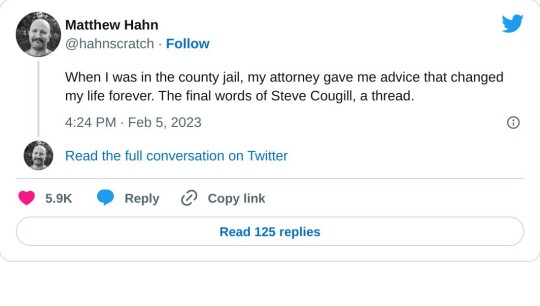#matthew hahn
Text
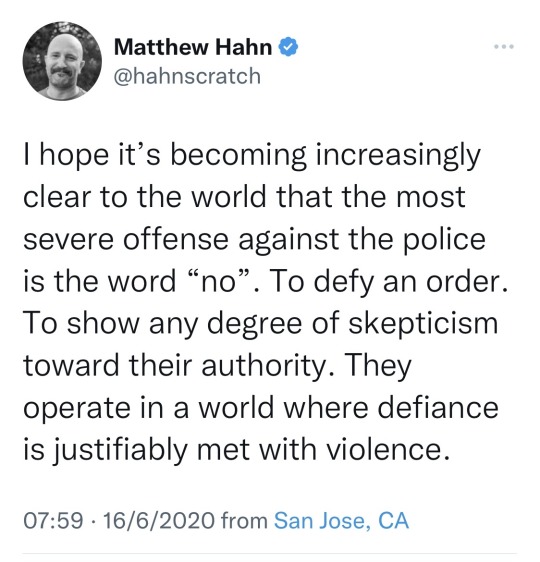
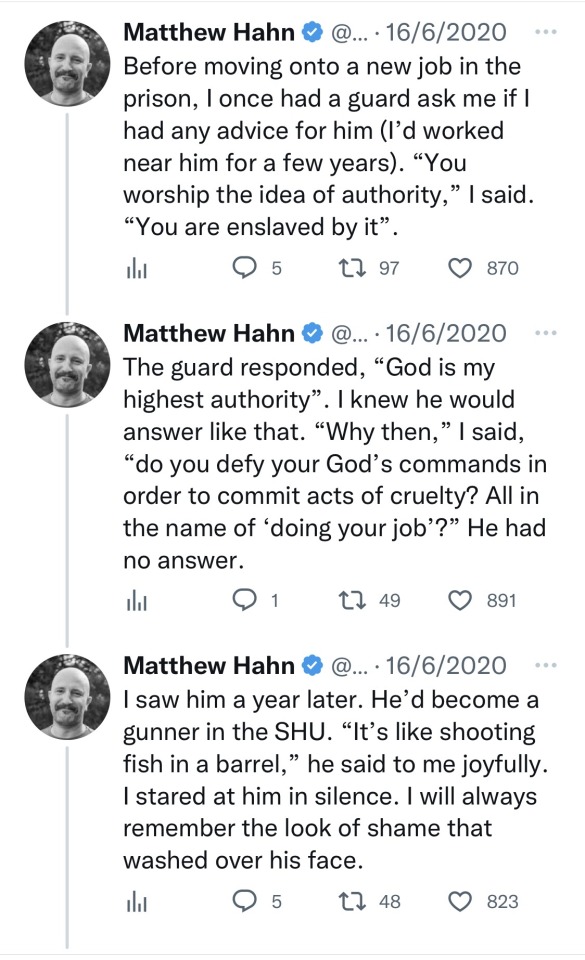
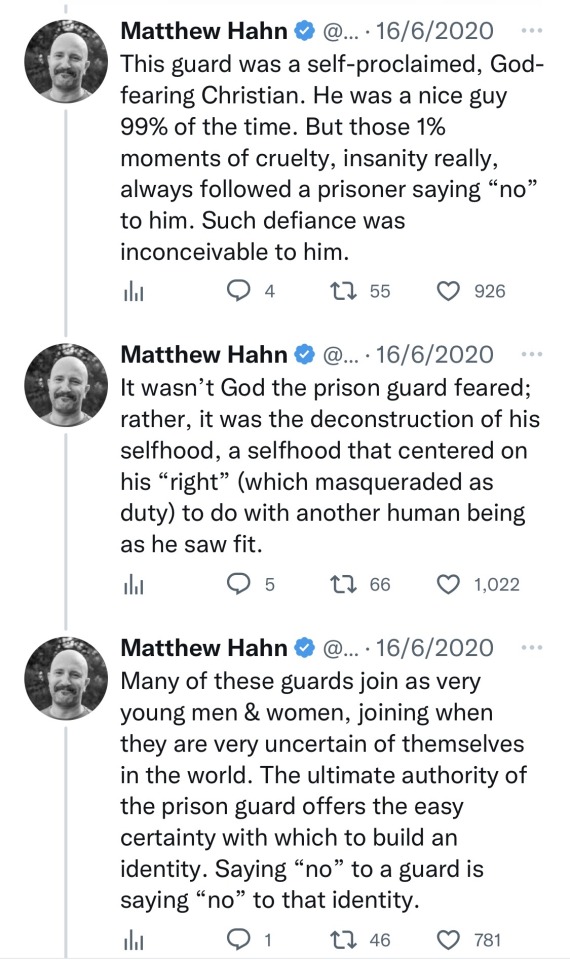


From Matthew Hahn’s twitter. Many good stories and lots of food for thought.
#meanwhile on twitter#Matthew Hahn#police#also#the real test of your safety in a relationship is to say no and see what happens#q
22 notes
·
View notes
Photo
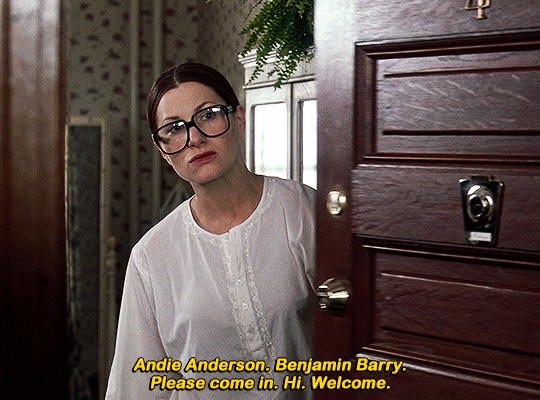


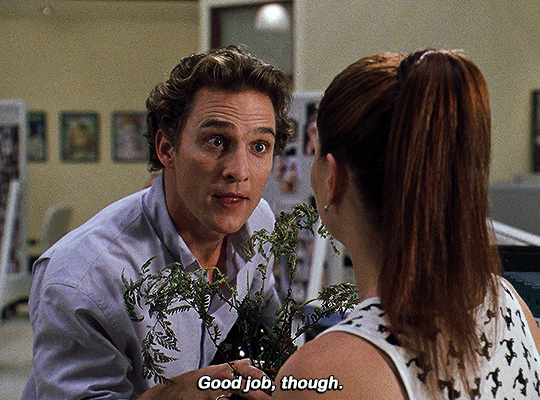
HOW TO LOSE A GUY IN 10 DAYS (2003)
dir. Donald Petrie
#how to lose a guy in 10 days#kathryn hahn#matthew mcconaughey#kate hudson#filmedit#romanceedit#romcomedit#dailyflicks#cinematv#cinemapix#fyeahmovies#mcblings#useradie#tusercarol#zanisummers#tusersai#useryusi#usergiu#*#had to gif this after matthew said it was his favorite scene and no one could keep it together
3K notes
·
View notes
Text
Made this meme just for fun

#linkin park#chester bennington#chester be#mike shinoda#brad delson#rob bourdon#dave farrell#phoenix lp#dave phoenix farrell#mr hahn#joe hahn#muse#matthew bellamy#chris wolstenholme#dominic howard#absolution#a thousand suns#ats#alternative#alternative rock#independent rock#independent#eletronic rock#eletronic#rock#random thoughts
44 notes
·
View notes
Text
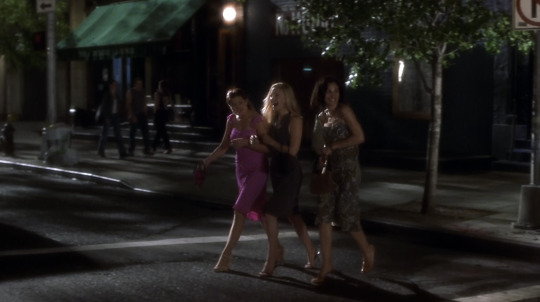





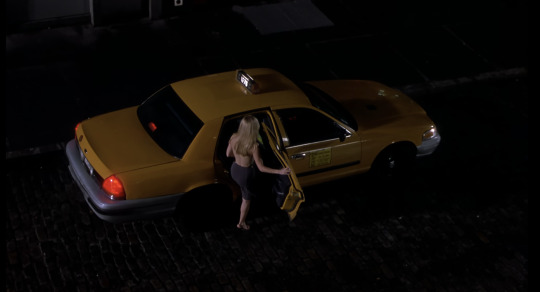

How to Lose a Guy in 10 Days (2003)
#How to Lose a Guy in 10 Days#2003#2000s#film#Kate Hudson#Donald Petrie#Matthew McConaughey#Kathryn Hahn
5 notes
·
View notes
Text
📽️ How to Lose a Guy in 10 Days (2003)
I can honestly say that I have never seen another movie like this one. Not only is it a unique storyline, but it also has the perfect cast. I could watch this over and over again, and I have. The second-hand embarrassment, the cringey moments, the sweet heartfelt scenes — it’s all perfect. I really really like this movie.
Sex/nudity: 3/10 (kissing/making out, talk of genitalia, talk of sex, no sex scenes but sex is implied)
Language: 3/10 (a lot of sh*t, no f words, God’s name several times)
Violence: 1/10 (man is punched with minimal blood)
Overall rating: 9/10

#review#movie#movie review#how to lose a guy in 10 days#romance#feel good#romantic comedy#romcom#comedy#kate hudson#andie anderson#matthew mcconaughey#kathryn hahn#adam goldberg#thomas lennon#michael michele#shalom harlow#robert klein#bebe neuwirth#celia weston#william hill#doug murray#natalie brown#marvin hamlisch
6 notes
·
View notes
Text
I forgot one of the things kathryn hahn was known for early in her career was being the quirky and endlessly supportive best friend in rom coms. And its funny watching her play second fiddle to female leads she now has greater cultural purchase than. Also more relevant than a lot of male rom com leads from that era too. Something to be made of the longevity of the zany friends outlasting the beautiful heart throbs. Nothing i am especially interested in myself but a person could make something of that
#Like rn who do you think is most in the public eye. Kathryn hahn jack black cameron diaz kate winslet. I think kathryn is easily top 2#More than kate hudson too and i know matthew mcconaughey had that like 2 year period of being Important relatively recently#But its no longer#Forgot to mention jude law whose career trajectory very unfairly correlated w his hairline#Reese witherspoon and owen wilson the only couple she sidekicked that i think are maybe still a bigger deal than her. And im rlly only#Confident abt reese
2 notes
·
View notes
Text
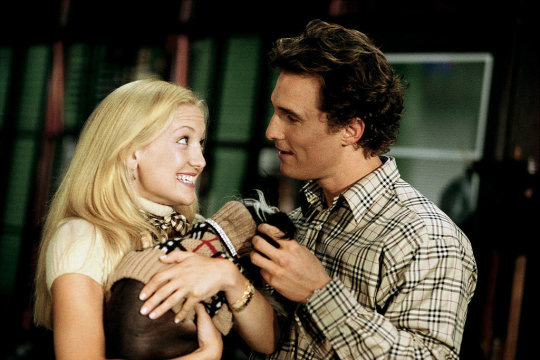
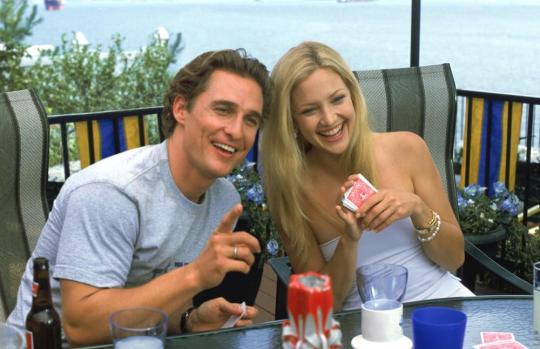


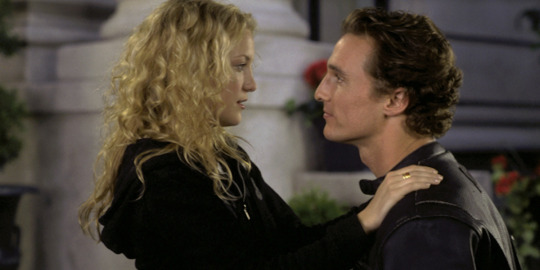
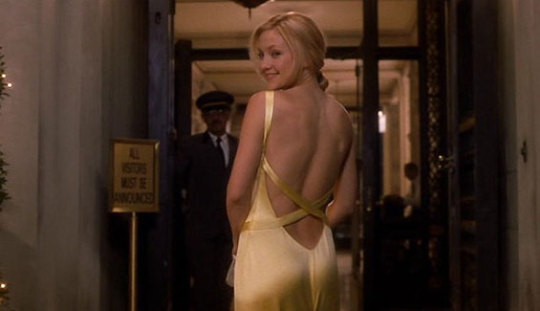

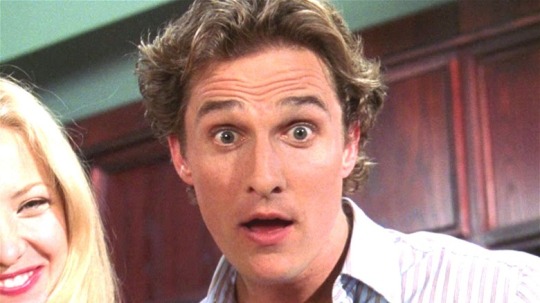
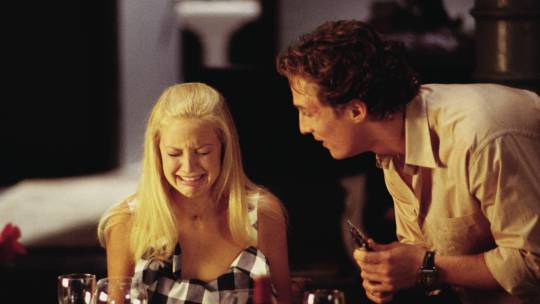

How to Lose a Guy in 10 Days
2003
3 notes
·
View notes
Text
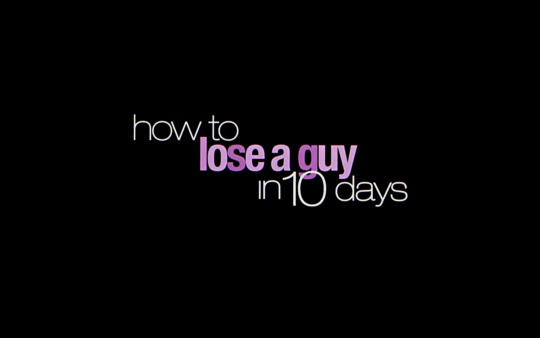
How to Lose a Guy in 10 Days by Donald Petrie, 2003
#Donald Petrie#kate hudson#matthew mcconaughey#kathryn hahn#romantic comedy#romance#comedy#2000s#2000s movies
2 notes
·
View notes
Photo

#how to lose a guy in 10 days#movies#donald petrie#kate hudson#matthew mcconaughey#kathryn hahn#annie parisse#adam goldberg#michael michele#shalom harlow#illustration#vintage art#alternative movie posters
4 notes
·
View notes
Text
'“Oppenheimer” has been justly praised for its attempt at historical fidelity in telling the life story of the brilliant, agonized physicist, but it’s not a documentary.
The movie gets most things right about Oppenheimer’s role in the Manhattan Project, the government effort to build the atomic bomb, as one would expect given that filmmaker Christopher Nolan based it on “American Prometheus,” the superb 2005 biography of J. Robert Oppenheimer by Kai Bird and Martin J. Sherwin.
But artistic imperatives and Nolan’s understandable choice to tell his story from Oppenheimer’s point of view led him to perpetuate a few myths about the making of the atomic bomb and to gloss over aspects of the story that may be interesting for lay viewers.
Based on what I gleaned about Oppenheimer and the project from researching my 2015 biography of Berkeley physicist Ernest O. Lawrence (played in the movie by Josh Hartnett), “Big Science,” I’ll try to correct the Hollywood record and fill in the gaps.
Let’s jump in.
For the most part, Nolan sticks to the facts. “Oppenheimer” is notable among biopics for portraying real people doing the things they did at the time. Even peripheral characters who flit briefly across the screen are given their real names or identifiable characteristics.
As far as I can tell, the only imaginary or composite character in the film is the unnamed Senate aide played by Alden Ehrenreich, whose dramatic function is to be a sounding board for the grousing of Lewis L. Strauss (brilliantly played by Robert Downey Jr.), Oppenheimer’s political nemesis.
That bongo-playing physicist glimpsed at the Trinity plutonium bomb test in the New Mexico desert? Unnamed in the film, he’s Richard Feynman, later to be revered as Caltech’s resident genius but, at 24, attached to the Los Alamos bomb lab at the very beginning of his scientific career. (He did bring his bongos to the desert.)
Lawrence’s associate Luis Alvarez, later a Nobel laureate, is accurately portrayed as bursting into an Oppenheimer seminar in 1939 with the first news of the discovery of nuclear fission by German physicists Otto Hahn and Fritz Strassmann. The film also accurately shows Oppenheimer instantly responding, “That’s impossible,” promptly withdrawing his snap judgment and, within a week, outlining how the discovery might be used to make a bomb.
But the film doesn’t cover Alvarez’s resentful and damaging testimony in the Oppenheimer security hearing, during which he claimed to have heard Vannevar Bush, the top science advisor to Presidents Franklin Roosevelt and Harry Truman, reveal that Truman had not trusted Oppenheimer. Bush — who is played by Matthew Modine — vociferously contradicted the story.
The most glaring historical gaffe is the film’s perpetuation of the myth that Oppenheimer was the boss of the Manhattan Project; it shows him assuring Gen. Leslie R. Groves that he can run the project. (Matt Damon would have had to put on at least 50 or 60 pounds to more accurately impersonate Groves, who tipped the scales at nearly 300 pounds.)
Oppenheimer was merely the boss of Los Alamos, one of the project’s numerous separate labs and technical installations. Its job was to actually build the bomb, drawing on the research of labs at Columbia, the University of Chicago and Berkeley. Though Groves was the overall boss, the project’s scientific management was divided, rather tetchily, between Lawrence and Arthur Holly Compton of the University of Chicago.
Lawrence was the scientist whose advice Groves trusted the most. He originally wanted Lawrence to run the lab that was eventually built at Los Alamos, but decided Lawrence was too important to be limited to the bomb-designing task.
Oppenheimer was Groves’ second choice, but he turned to Lawrence for assurance that Oppenheimer could effectively run the bomb lab.
Lawrence, who at that time was a close friend of Oppenheimer, his valued colleague at UC Berkeley — he named his first son Robert after Oppenheimer — assuaged Groves’ concerns about Oppenheimer’s leftist politics and lack of a Nobel Prize. Lawrence sealed the deal for his friend by promising Groves that if Oppenheimer failed in his task, he would take it over himself.
A few words about Ernest Lawrence. Before and during the war, the South Dakota native was the most famous and influential scientist in America — arguably the first home-grown scientific celebrity in American history.
The inventor of the cyclotron, the most important atom-smasher of its era and the invention that transformed particle physics in the 1930s, Lawrence was featured on the cover of Time magazine on Nov. 1, 1937, over the caption “He creates and destroys,” and won the Nobel Prize in 1939.
Lawrence’s skill at explaining complex scientific principles in lay terms kept him in the public eye via radio talks and newspaper articles and helped him attract millions of dollars in foundation and government funding for his Radiation Laboratory — the “Rad Lab” — at UC Berkeley. It was due to his influence that UC was awarded the contract to run Los Alamos after the war, which it still holds, albeit with somewhat diminished authority. Lawrence also invented a color TV system that was eventually incorporated into Sony’s Trinitron technology.
Oppenheimer, by contrast, was almost entirely unknown to the general public until after the bombs were dropped on Hiroshima and Nagasaki in August 1945, when he was thrust into fame as “the father of the atomic bomb.”
Among the physics fraternity, however, Oppenheimer was virtually a cult figure, which is painted only murkily in the film. His graduate students at Berkeley and Caltech, where he held joint appointments, chain-smoked his brand of cigarettes (Chesterfields), imitated his loping gait, and replicated the almost unintelligible mumbling of his lecturing style.
Austrian physicist Paul Ehrenfest, a friend of Oppenheimer’s who sat through one of his Caltech lectures straining to make out his words, finally blurted out, “Oppie, is it a secret?”
Another myth perpetuated by the film is that the physicists were afraid that the bomb blast might ignite the atmosphere, destroying the world. “Oppenheimer” depicts this possibility being debated almost as late as the Trinity test. In fact, it had been raised very briefly in 1942 and promptly put to rest by Manhattan Project physicist Hans Bethe, who later called it “absolute nonsense.”
One more point concerns Oppenheimer’s recollection that upon witnessing the fireball produced by the Trinity test, he immediately thought of a line from the Sanskrit Bhagavad-Gita: “I am become death, destroyer of worlds.”
The film takes him at his word, but the truth is that he never mentioned this in public until 1965; one friend considered the claim to be one of Oppenheimer’s “priestly exaggerations.” By the way, the line from the Hindu scripture has been translated in other ways, notably as “I am become time, destroyer of worlds,” perhaps a subtler and more sinister thought than Oppie’s version.
Some aspects of the 1954 security hearing as depicted in the film warrant further examination. The film accurately shows that Groves, asked if he would give Oppenheimer a security clearance at the time of the hearing, answered carefully that he would not, under the stringent security rules imposed by the Atomic Energy Commission. But his subsequent sotto voce remark, to the effect that he probably wouldn’t give any of the Manhattan Project scientists clearance under those rules, doesn’t appear anywhere in the 1,011-page hearing transcript.
Then there’s Lawrence’s decision not to testify against his old friend. By 1954, Lawrence and Oppenheimer had had a bitter falling-out. The film attributes this mostly to Lawrence’s fury upon learning that Oppenheimer had carried on an affair with the wife of Caltech physicist Richard Tolman, a close friend of Lawrence. Tolman committed suicide shortly after learning of the betrayal, which Lawrence ascribed to his broken heart.
But another reason for their split was Oppie’s campaigning against the hydrogen bomb program, which Lawrence favored and which was a major source of government patronage for his lab — Lawrence Livermore National Laboratory, an offshoot of the Rad Lab, had been founded largely to pursue research on the so-called Super.
Although Lawrence had promised Strauss, who as chairman of the AEC oversaw all civilian government nuclear research and stage-managed the security hearing, that he would testify, he was racked with second thoughts as his appearance date approached.
Lawrence knew that the physics community overwhelmingly supported Oppenheimer, and that Berkeley had become the center of anti-Oppenheimer sentiment, in part because of the conflict over the H-bomb program. This was not a good look for the Rad Lab.
Contrary to the film’s depiction, Lawrence never actually showed up outside the hearing room. Instead, he phoned Strauss the Monday before his scheduled appearance from the government’s Oak Ridge lab, which he had founded and designed for the production of enriched uranium for the bomb ultimately dropped on Hiroshima (the Trinity test was of a plutonium bomb like that dropped on Nagasaki, which was a much more complicated engineering challenge).
As the film shows, Lawrence pleaded a medical excuse — an outbreak of ulcerative colitis, the condition that would ultimately kill him in 1958. After Strauss responded with a vicious tongue-lashing over the phone, culminating in an accusation of cowardice, Lawrence summoned his fellow Oak Ridge guests, all government lab directors, to prove he was not feigning illness by showing them his toilet, brimming with bright red blood.
Christopher Nolan’s film implicitly asks viewers to come to their own conclusions about the moral dimension of the decision to drop the bomb on Japan. A committee of four physicists — Oppenheimer, Lawrence, Compton and Fermi — was tasked with the options, which included staging a demonstration at an uninhabited Pacific island to show Japanese officials what they faced if they didn’t surrender.
Lawrence, who had worked with Japanese scientists to build the first cyclotrons outside the U.S., was the last member of the committee to agree that using the bomb was the only choice, for the possibility of a dud demonstration was too great to risk. As the committee chair, Oppenheimer signed the one-page memo, dated June 16, 1945, that came to the dismaying conclusion that “we see no acceptable alternative to direct military use.”
What the physicists didn’t know was that the decision already had been taken out of their hands. That Boeing B-29 bombers that would carry the bombs had already been assembled on Tinian Island, 1,500 miles south of Japan, and the military decision to use the bombs was preordained.
How should we think about the development of nuclear weapons and Oppenheimer’s role? My view is that the Manhattan Project was understandable and defensible given the wartime context. Allied physicists, especially refugees from the Nazi regime, knew that although Hitler had driven away Jewish scientists, the physicists left behind in Germany were among the best in the world, perfectly capable of developing the atomic bomb. They were in a panic that Hitler might get the weapon before the Allies.
They had no way of knowing that, as the Allies discovered after Germany’s surrender, there had been no German bomb project because the Germans miscalculated the physics involved and didn’t have access to the resources and equipment, including the cyclotron, in the U.S. and Britain.
The decision to pursue the hydrogen bomb is another story. Fermi and other leading physicists understood that its incredible power meant it could only be a weapon of genocide. Some worked on it anyway. Oppenheimer’s notion that nuclear research should be placed under international control to forestall the perils of nuclear proliferation was idealistic, but in terms of geopolitical reality hopelessly naive. There was no way that the U.S. and Britain would cede control of the technology to any international body after 1945.
The tragic message of Oppenheimer and “Oppenheimer” is that humankind has lived under a nuclear sword of Damocles ever since.'
#Oppenheimer#Christopher Nolan#American Prometheus#Kai Bird#Martin J. Sherwin#Ernest O. Lawrence#Josh Hartnett#Lewis Strauss#Alden Ehrenreich#Robert Downey Jr.#Richard Feynman#Luis Alvarez#Otto Hahn#Fritz Strassmann#Vannevar Bush#Franklin D. Roosevelt#President Truman#Matthew Modine#Leslie Groves#Matt Damon#Los Alamos#The Manhattan Project#Arthur Holly Compton#Nobel Prize#Hans Bethe#Trinity test#Bhagavad-Gita#Richard Tolman#Enrico Fermi
1 note
·
View note
Text
week thirty-four (missed) (19/12/22) (21:33)
How to Lose a Guy in 10 Days

8/10
biting the bullet and watching it after the tiktok trend even though i don’t like matthew mcconaughey. ew he’s a motorcycle guy? ew he’s called ben? matthew mcconaughey looks so old. nothing sets the mood like hip-hop. the punch was deserved. like he’s such an ick. she’s a stunner. i love kate hudson. “something hyper-masculine” ew. animal abuse just 🤪 “you just lost him” as if he’s some prize. that was some fucking tongue kiss at the end jesus.
#new movie every week#movie review#how to lose a guy in 10 days#kate hudson#matthew mcconaughey#kathryn hahn
0 notes
Text
























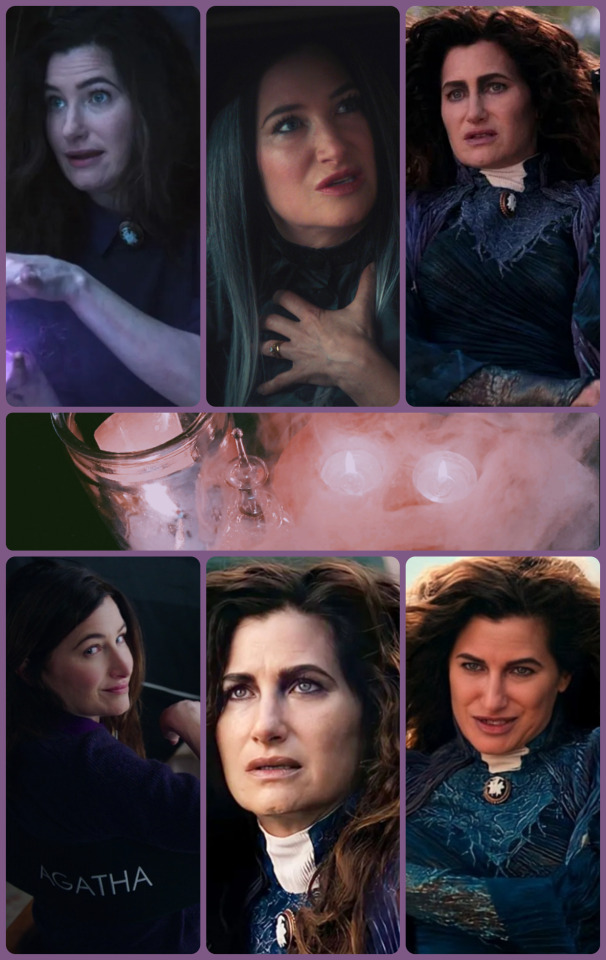





🎃 TJ MIKELOGAN'S HALLOWEEN 2023 EVENT 🎃
DAY 26: Witches
ICONIC WITCHES, MAGIC USERS & GODS
Bette Midler as Winifred Sanderson in Hocus Pocus (1993) dir. Kenny Ortega
Robin Tunney as Sarah Bailey in The Craft (1996) dir. Andrew Fleming
Charisma Carpenter as Cordelia Chase in the Buffy-verse (1997-2004) creator Joss Whedon
Holly Marie Combs as Piper Halliwell in Charmed (1998-2006) creator Constance M. Burge
Tom Hiddleston as Loki Laufeyson in Loki (2021-) creator Michael Waldron
Fairuza Balk as Nancy Downs in The Craft (1996) dir. Andrew Fleming
Elizabeth Olsen as Wanda Maximoff/The Scarlet Witch in Doctor Strange in the Multiverse of Madness (2022) dir. Sam Raimi
Amber Benson as Tara Maclay in the Buffy-verse (1997-2004) creator Joss Whedon
Anya Taylor Joy as Thomasina in The Witch (2015) dir. Robert Eggers
Neve Campbell as Bonnie Harper in The Craft (1996) dir. Andrew Fleming
Emma Watson as Hermione Granger in Harry Potter (2001-2011)
Sandra Bullock as Sally Owens in Practical Magic (1998) dir. Griffin Dunne
Cher as Alexandra Medford in The Witches of Eastwick (1987) dir. George Miller
Sarah Jessica Parker as Sarah Sanderson in Hocus Pocus (1993) dir. Kenny Ortega
Miranda Richardson as Lady Van Tassel in Sleepy Hollow (1999) dir. Tim Burton
Rachel True as Rochelle Zimmerman in The Craft (1996) dir. Andrew Fleming
Rene Russo as Frigga in Thor: The Dark World (2013) dir. Alan Taylor
Shannen Doherty as Prue Halliwell in Charmed (1998-2006) creator Constance M. Burge
Alyssa Milano as Phoebe Halliwell in Charmed (1998-2006) creator Constance M. Burge
Sophia Di Martino as Sylvie Laufeydottir in Loki (2021-) creator Michael Waldron
Michelle Pfeiffer as Sukie Ridgemont in The Witches of Eastwick (1987) dir. George Miller
Alyson Hannigan as Willow Rosenberg in the Buffy-verse (1997-2004) creator Joss Whedon
Kathy Najimy as Mary Sanderson in Hocus Pocus (1993) dir. Kenny Ortega
Christina Ricci as Katrina Van Tassel in Sleepy Hollow (1999) dir. Tim Burton
Kathryn Hahn as Agatha Harkness in WandaVision (2021) creator Jac Schaeffer
Rose McGowan as Paige Matthews in Charmed (1998-2006) creator Constance M. Burge
Cate Blanchett as Hela Odinsdottir in Thor: Ragnarok (2017) dir. Taika Waititi
Susan Sarandon as Jane Spofford in The Witches of Eastwick (1987) dir. George Miller
Eva Green as Angelique Bouchard in Dark Shadows (2012) dir. Tim Burton
Nicole Kidman as Gillian Owens in Practical Magic (1998) dir. Griffin Dunne
#USERTJ#horror#horroredit#fantasy#fantasyedit#halloweenedit#hocus pocus#the craft#buffy the vampire slayer#btvs#angel series#ats#btvsedit#charmed#charmededit#marveledit#harry potter#hpedit#practical magic#the witches of eastwick#sleepy hollow#dark shadows#2023 halloween season
54 notes
·
View notes
Text
Occult Authors to Avoid

🦋 Silver Raven Wolf
Racist, misinformation, conflation of Wicca & Witchcraft, monotheistic prejudice, perpetuation of the Burning Times, dictatorship over practices.
🦋 Raymond Buckland
Misinformation, massive contributor to the misconceptions of the threefold law & burning times, sexualization and fetishization of religious practice, misconceptions on Neo-Wicca
🦋 Arin Murphy-Hiscock
Silver Raven Wolf’s student, has lots of the same ideas as her
🦋 Ann Moura
Racist, conflation of Wicca & Witchcraft, misinformation on Wicca's origins
🦋 Aleister Crowley
Bigoted, racist, antisemitic, appropriation, misogynist, gender bias
🦋 Catherine Yronwode
Incites violence, appropriation, racism, harassment
🦋 Christian Day
Rape threats, harassment, curse threats, self proclaimed warlock
🦋 Diana Paxson
Ableist, racist
🦋 EA Koetting [Matthew Joseph Lawrence]
Appropriation, drug abuse, self deification
🦋 Edward P. Butler
Hindutva supporter (Hindu alt nationalism), supports Galina Krasskova, claims for harassment
🦋 Frosts [Gavin Frost, Yvonne Frost]
Pedophilic writing, misinformation and claim to creation of Wicca
🦋 Galina Krasskova - Etsy [wyrdcuriosities]
Classist, racist, openly supports alt right & fascist movements, Nazi apologist, monotheistic prejudice (namely Islamophobia)
🦋 Gordon White [Rune Soup]
Appropriation, misinformation, Covid denial, anti Covid vax, race critical theosophy and polygenism
🦋 Jasmuheen [Ellen Greve]
Breatharianism, contributed to community deaths (1990s)
🦋 Kenaz Filan
Appropriation, racism, transphobia, white supremacy, adheres to alt right ideologies, harassment
🦋 Kenny Klein
Pedophile, convicted for possession of child porn
🦋 Helena Blavatsky [Helena Petrovna Hahn, Hélène]
Pseudo-science, political conspiracies, appropriation, contributor to modern alien political conspiracies that exist across the US today
🦋 Lisa Lister
TERF ideologies, medical misinformation, cultural appropriation
🦋 Maulana Karenga [Ronald McKinley Everett]
Advocate for human torture/torturer, rapist
🦋 Peter Grey
Playing down bigoted presence, defending fascists, transphobes, and white supremacists
🦋 Raven Kaldera
Misinformation, appropriation, fascism, transmisogyny, ableism, racism, cissexism
🦋 Rhyd Wildermuth [Gods & Radicals Press]
Defends fascist authors, transphobic, misogynistic, supports Hindutva & Edward Butler; requested by server members
🦋 Robin Artisson
Destructive and racist behavior
🦋 S. Connolly
Conflates mental health w/ spirituality, appropriation (Lilith, chakras), depiction of witches as an oppressed group
🦋 Skye Alexander
Appropriation, racism, misinformation, rede-thumping
🦋 Stephen E. Flowers [Edred Thorsson, Darban-i-Den]
Nazi, white supremacist, racist
🦋 Tamara L. Siuda [Mambo Chita Tann]
Appropriation, possible transcendent belief setup & infallible charismatic leadership/dictatorship (personality cult)
🦋 Terence McKenna
Appropriation, pseudoscience, contributor to misrepresentation of shamanism (collective practice)
🦋 Tsirk Susej [Chad Ian Miller]
Misinformation, appropriation, radicalism, conspiracy, affiliation with the Church of Satan & O9A, self proclaimed Antichrist, religious extremism
🦋 Varg Vikernes [Louis Cachet], twitter [WargarW, GandalftheWhi19], YouTube [ThuleanPerspective]
Murderer, arsonist, contributor to the Norsk Hedensk Front (nazi-occult group)
🦋 William R. Wraithe, Twitter [william_wraithe]
Harassment & threats, repeated curse threats, self proclaimed ‘savior’
🦋 Anastasia Greywolf
Misinformation, appropriation
🦋 Asenath Mason
Appropriation, misinformation
🦋 Christopher Penczak
Victim blaming, curse shaming, appropriation, misinformation
🦋 Danielle Dionne
White author & eclectic spiritualist using rootworking and hoodoo for monetary gain
🦋 Dante Abiel
Appropriation, fetishization of ATRs, misinformation
🦋 DJ Conway
Misinformation, fetishization of Celtic myth, appropriation
🦋 Doreen Virtue
Large contributions to chakras, crystal pseudosciences, and harmful stereotypes for starseeds in spirituality
🦋 EA Wallis Budge
Misinformation, poor translation
🦋 Edain McCoy
Misinformation, perpetuation of harmful Irish stereotypes, pseudo historical writing. Creator of ‘Witta’. McCoy is the creator of the infamous ‘Irish Potato Goddess’
🦋 Gabriela Herstik
Misinformation, historical fallacies, appropriation
🦋 Michael W. Ford
Appropriation, misinformation
🦋 Scott Cunningham
Broad misinformation, appropriation, conflation of Wicca & Witchcraft
🦋 Semra Haksever
Appropriation of Hoodoo, use of smudging, chakras, spirit animals; requested by server members
🦋 Starr Casas
Appropriation, white woman writing about Hoodoo, Rootworking, and Voodoo
#authors to avoid#witchcraft#witchblr#witchcraft community#witches of tumblr#my posts#witchcraft authors#witch
13 notes
·
View notes
Text
24 books in 2024
It is 2024, and I am here yet again with my bookish hopes and dreams!
I did this challenge last year (available here), and in 2022 (available here), and I'm STOKED to do it again this year! As is my way, I have been planning and revising this list for some time. My Goodreads overfloweth with ideas.
As always, if you have book recs, please send them my way! And, if you're participating in the challenge this year, I'd love to see your lists!
Without further ado, I gladly present to you my 24 in '24 book list:
Sci-Fi and Just for Fun :)
1) Randomize by Andy Weir (read April 2024)
2) Next by Michael Crichton (read May 2024)
3) Do Androids Dream of Electric Sheep? by Philip K. Dick (read April 2024)
4) With a Little Luck by Marissa Meyer (read February 2024)
Environmental Science/Ecology/Books Relevant to my Studies
5) Operating Manual for Spaceship Earth by Buckminster Fuller (read April 2024)
6) Must Love Trees: An Unconventional Guide by Tobin Mitnick
7) Scientifically Historica: How the World’s Great Science Books Chart the History of Knowledge by Brian Clegg
8) Letters to a Young Scientist by Edward O. Wilson
Reading Around the World
9) The Eighth Continent: Life, Death and Discovery in the Lost World of Madagascar by Peter Tyson (Madagascar)
10) Everything is Wonderful: Memories of a Collective Farm in Estonia by Sigrid Rausing (Estonia)
11) Willoughbyland: England’s Lost Colony by Matthew Parker (Suriname)
12) A General Theory of Oblivion by José Eduardo Agualusa and Daniel Hahn (Translator) (Angola)
Rory Gilmore Reading Challenge/Classics
13) The Picture of Dorian Gray by Oscar Wilde (read April 2024)
14) The Second Sex by Simone De Beauvoir, H.M. Parables (Translator and Editor), and Deirdre Bair (Introduction)
15) Gidget by Frederick Kohner
16) Bel Canto by Ann Patchett
Recommended by Friends
17) Meditations by Marcus Aurelius (recommended by @hedonism-tattoo and many, many others)
18) Howl’s Moving Castle by Diane Wynne Jones (also recommended by many people now. @permanentreverie posted about it recently tho, and that was what really made me decide to include it on this list!) (read April 2024)
19) Tress of the Emerald Sea by Brandon Sanderson (recommended by @daydreaming-optimist ) (read April 2024)
20) The Phantom of the Opera by Gaston Leroux (recommended by @kaillakit) (read May 2024)
Eco-Psychology
21) Ecopsychology by Lester R. Brown
22) Against Purity: Living Ethically in Compromised Times by Alexis Shotwell (read April 2024)
23) Radical Ecopsychology: Psychology in the Service of Life by Andy Fisher and David Abram (foreword)
24) Sight and Sensibility: the Ecopsychology of Perception by Laura Sewall
Bonus
25) Bride by Ali Hazelwood (read February 2024)
26) Open Heart Surgery by Johanna Leo (read March 2024)
27) A Short History of the World in 50 Books by Daniel Smith
28) Candy Hearts by Tommy Siegel (read February 2024)
No pressure tagging: @daydreaming-optimist @kaillakit @permanentreverie @noa-the-physicist @silhouette-of-sarah @captaindelilahbard @senatorhotcheeto @the-bibliophiles-bookshelf @skyekg @of-the-elves @obesecamels @courageisneverforgotten @willowstea @its-me-satine @deirdrerose @notetaeker @theskittlemuffin and anyone else who wants to do this!
#I'm a bit late to posting this#as it is now [checks calendar] MID FEBRUARY? WHAT?#but here it is anyway!#24 books in 2024#studyblr#bookblr#book lists#book recs#books#24/24 list#friends#mutuals#grace speaks#reading challenge#book challenges#studyspo#light academia#reading#dark academia#studyinspo#studyspiration#book recommendations
17 notes
·
View notes
